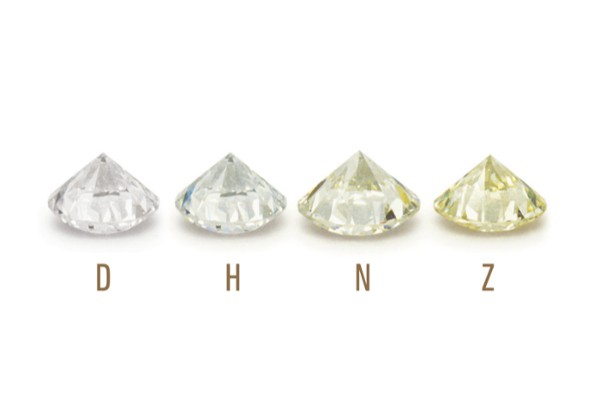
Where is the Best Place to Buy Wedding Bands?
December 18, 2019
Labs Warn of Synthetic Diamond Color Instability
January 17, 2020Are Canadian Diamonds Worth the Extra Money? Why Are Diamonds from Canada so Expensive?

If you have been shopping around for diamonds, you may have come across Canadian diamonds. Often, they are branded as ‘premium’ items and are noticeably pricier than other, similar diamonds. Before paying more for a Canadian diamond, I suggest you read this full guide to Canadian diamonds so that you can decide for yourself if they are worth the extra money.
The Benefits of Canadian Diamonds
Diamonds were first discovered in Canada in the 1990’s, considerably later than other popular diamond mining regions such as South Africa (1867) and Sierra Leon (1930). In a way, this gave Canada a ‘clean slate’ to rewrite the troubled history of diamond mining and put in place strict regulations to protect people and places relating to the diamond mining.
The Canadian government enforces some of the toughest regulations which protect wildlife habitats. The discovery of the diamonds also led to a boom in fair labour jobs from which aboriginal communities have benefited; this has resulted in economic prosperity for the locals. Canadian diamonds are also easily tracked and sourced after purchase due to the strict auditing processes that are in place.
The Myths Surrounding Canadian Diamonds
Myth: Canadian Diamonds are beautiful and high quality
Truth: Canadian diamonds must be assessed with the same scrutiny as any other diamond, and many fall well below par
The perks are good but a personal pet hate is when Canadian diamonds are inexplicably marketed as better quality or ‘more beautiful’. Regardless of where it has been mined from, a diamond is only as good as the cut it is given and the clarity and color that is possesses. The notion that Canadian diamonds are somehow superior is completely misleading. People become enraptured with images of the glacial artic and assume the diamonds will somehow mirror this romantic image. A pretty notion, but not a helpful one when it comes to diamond buying.
Myth: The Canadamark™ guarantees a high-quality diamond
Truth: The Canadamark™ is a marketing tool used to drive prices of Canadian diamonds higher so as to continue the economic success of Canadian diamond mining
A diamond with a cut grade of Very Good and above, a color grade of L or above, and a clarity grade of I2 and above can bear the Canadamark™. This is a really low bar to set. I wouldn’t recommend any of these grades for an engagement ring. The Canadamark™ ensures the integrity of the supply chain and although this is positive, it has absolutely no bearing on the appearance of the diamond. The programme shows the social benefits of the diamond mining industry and uses the mark to keep the price of diamonds as high as possible.
Myth: Canadian diamonds are the only natural diamonds that are conflict free
Truth: The Kimberley Process ensures that all diamonds are conflict free
There are a great number of ethical and social benefits to buying Canadian diamonds, however it is worth noting that all diamonds from other regions now adhere to strict regulations and social responsibility schemes. Whiteflash and James Allen are great examples of this – you can read about Whiteflash’s social responsibility promise here and James Allen’s here. Since the introduction of the Kimberley Process in 2003, blood diamonds/conflict diamonds have become a thing of the past. The premium you pay on Canadian diamonds is not an indicator that they are more ethical than other diamonds on the market, simply that they are beneath the guise of a clever marketing scheme.
Why Are Canadian Diamonds Expensive?
Canadian diamonds come in around 15%-20% more expensive than diamonds sourced elsewhere. Having debunked the myths about beauty, quality and ethics, you are probably wondering why Canadian diamonds carry this premium.
The conditions in the Northwest Territories makes the mining and transportation of the diamonds a big challenge. The first costs are in the specialized machinery that must be used to complete the process. The second reason is the high labour costs and additional tariffs put in place by the Canadian government to ensure the locals reap the benefits of the continuation of the mining. The final reason is because the core of Canadian diamond appeal is about transparency – the certificates and tracking mean that every step of this lengthy process must be audited and this costs money.
Although we can see where the additional costs are going, they do not benefit the buyer in any way, nor do they result in a better looking or more ethical diamond.
Canadian Diamonds: A Comparison
First, let’s look at this 1.00ct H-VS2 round brilliant diamond Canadamark™ diamond. The specs are good, I would have no issue with this diamond aesthetically. However, at $8,660 it is seriously overpriced.
Next, we have a 1.108ct H-VS2 round brilliant diamond from Whiteflash. It is part of the in-house A CUT ABOVE© range of super-ideal cut diamonds and it has perfect hearts and arrows patterning. The cut is beautiful and the overall performance of the diamond is superior. At $7,535 it is $1,125 cheaper than the Canadian diamond.
Although there is nothing wrong with the first diamond, it simply isn’t as well cut as the A CUT ABOVE© diamond and has priced itself out of the competition. Finding a high quality, Canadian diamond can be a challenge in itself, and when you do find one, be prepared to pay over the odds.
The Final Word
I feel that too many people buy Canadian diamonds for ethical reasons and this concerns me. Not only do these customers end up paying more, but this view taints the diamond market in general and is not accurate. A thorough understanding of the Kimberley Process should help put your mind at ease before purchasing your diamond.
If Canada is a significant place for you or your partner, you may consider looking for a Canadian diamond for personal and sentimental reasons. Beyond this, there is no measurable benefit to choosing Canadian diamonds and you will pay more.
Whatever diamonds you are considering, look beyond clever marketing and sales gimmicks. Choose a diamond based on its performance, not its source.


